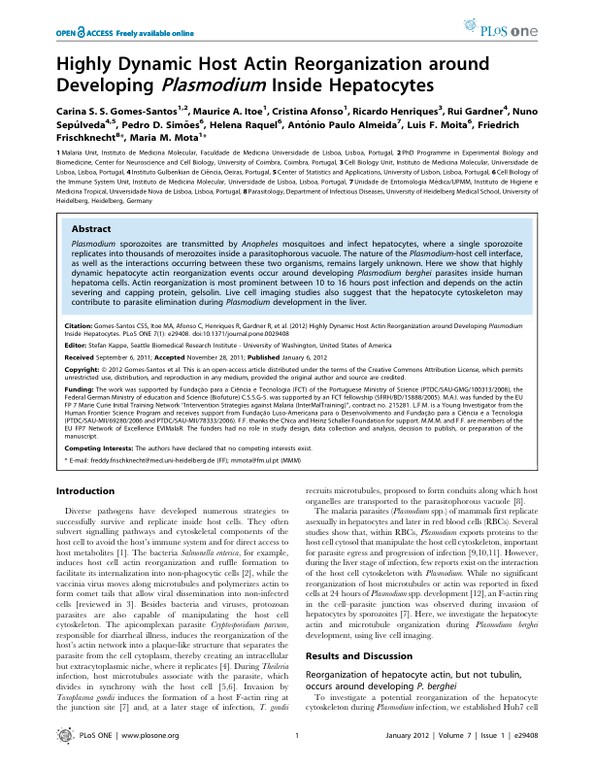Highly dynamic host actin reorganization around developing Plasmodium inside hepatocytes
Paper published in PLoS One, January 2012
Publisher: Public Library of Science San Francisco, USA

The manuscript "Highly Dynamic Host Actin Reorganization around Developing Plasmodium Inside Hepatocytes" by Gomes-Santos et al. (2012) explores the reorganization of the hepatocyte cytoskeleton during Plasmodium berghei (P. berghei) development. Using live cell imaging, the study reveals that actin, not tubulin, is restructured around developing parasites in vitro and in vivo. Actin reorganization is most prominent between 10 to 16 hours post infection and relies on the actin severing and capping protein, gelsolin. The findings suggest that actin polymerization around the parasite might contribute to its elimination mechanically. The researchers observed actin reorganization coinciding with parasite deformation and disappearance, and this phenomenon was not observed with Toxoplasma gondii or beads. The study employed various techniques, including time-lapse experiments, immunofluorescence, immunohistochemistry, and gene expression analysis, to further investigate the role of actin reorganization in P. berghei elimination.